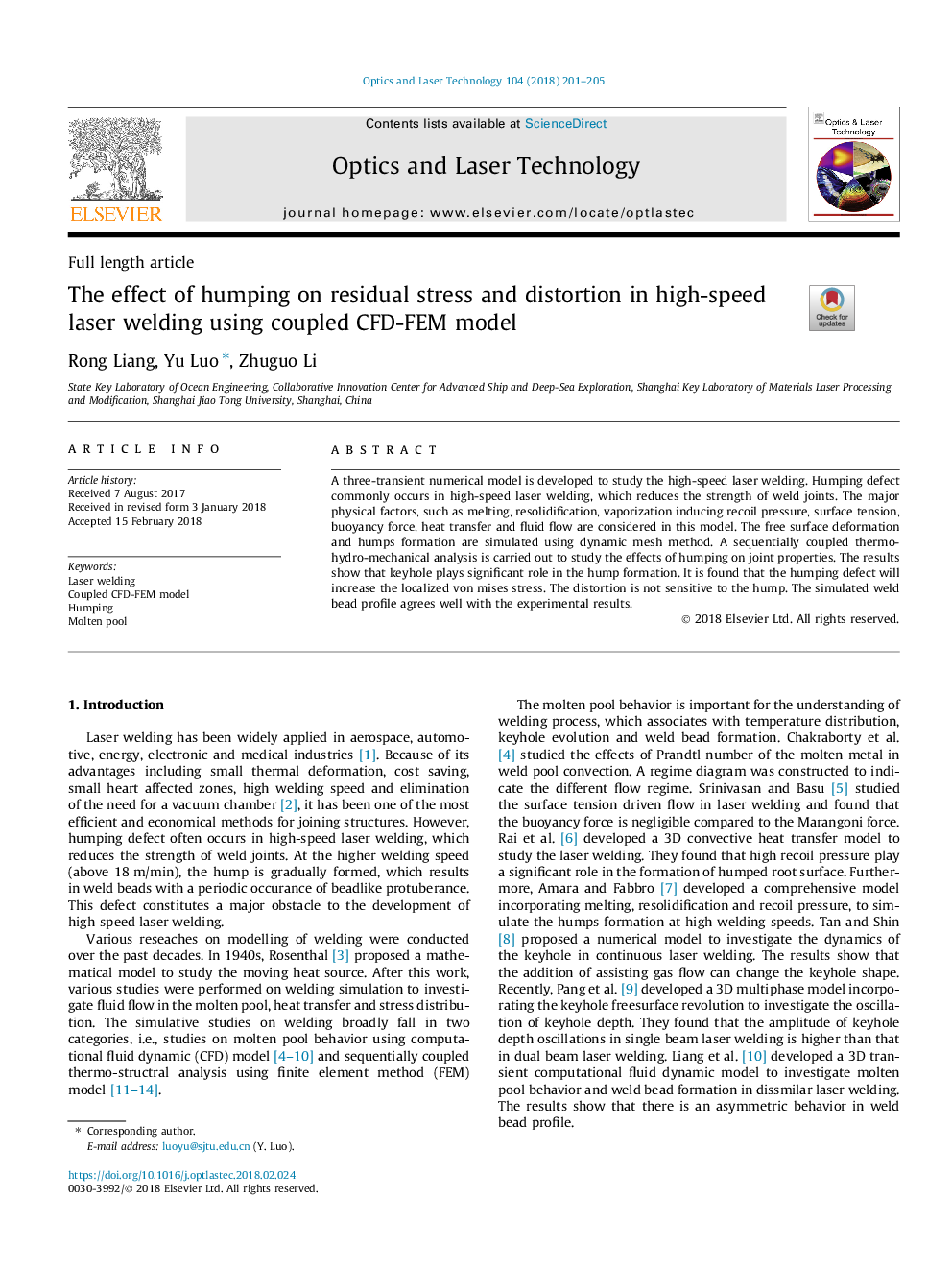| Article ID | Journal | Published Year | Pages | File Type |
|---|---|---|---|---|
| 7128906 | Optics & Laser Technology | 2018 | 5 Pages |
Abstract
A three-transient numerical model is developed to study the high-speed laser welding. Humping defect commonly occurs in high-speed laser welding, which reduces the strength of weld joints. The major physical factors, such as melting, resolidification, vaporization inducing recoil pressure, surface tension, buoyancy force, heat transfer and fluid flow are considered in this model. The free surface deformation and humps formation are simulated using dynamic mesh method. A sequentially coupled thermo-hydro-mechanical analysis is carried out to study the effects of humping on joint properties. The results show that keyhole plays significant role in the hump formation. It is found that the humping defect will increase the localized von mises stress. The distortion is not sensitive to the hump. The simulated weld bead profile agrees well with the experimental results.
Keywords
Related Topics
Physical Sciences and Engineering
Engineering
Electrical and Electronic Engineering
Authors
Rong Liang, Yu Luo, Zhuguo Li,
